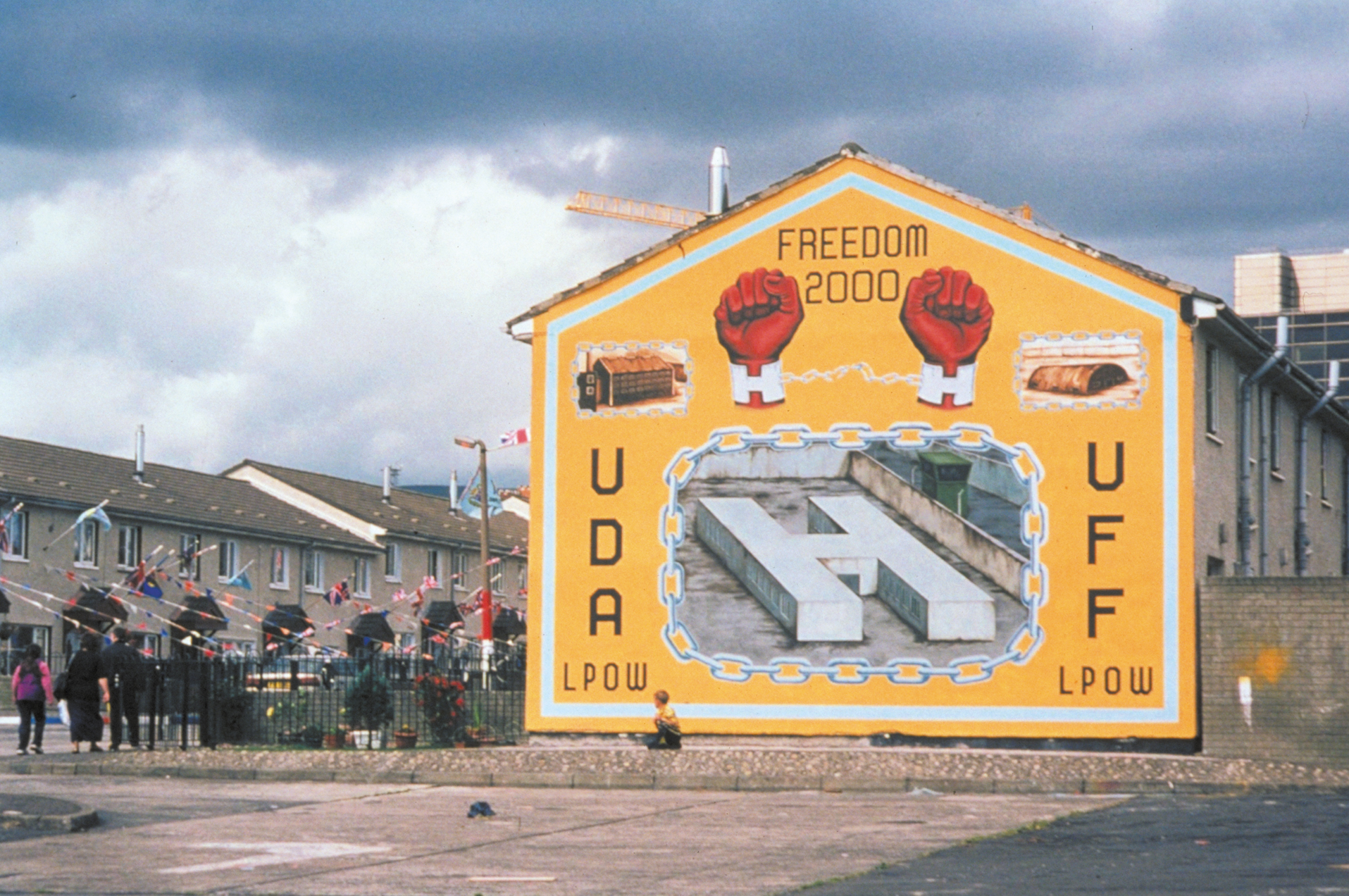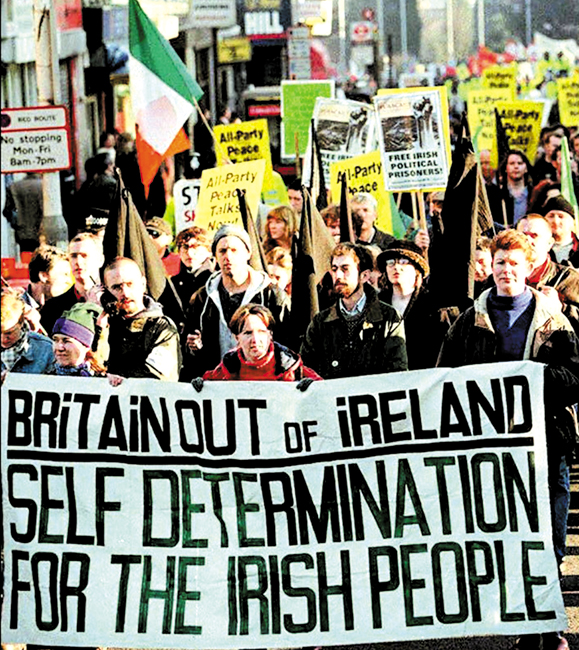The Maze is a one-hour program that explores life inside the notorious Maze Prison (also known as H-Block) in Northern Ireland, as former inmates from both communities, as well as former prison officers tell their stories. The opening sequences are of rare early footage of life inside the original Long Kesh prison in which a prison camp atmosphere existed, and Republicans and Loyalists co-existed in relative, though segregated calm. Early narrative sets the scene of life outside the prison: “In the early 1970’s, Northern Ireland was in turmoil; there was open violence on the streets. The Conservative government in London had introduced imprisonment without trial…” The hellish reality of life for those caught up in the violence was encapsulated in republican Brendan Hughes’ description of his feelings on the first day of a 15-year sentence. As the prison door clanks shut behind him, his first reaction is overwhelming relief that he is alive and that for him, at least for now, the war is over.
Much of the program focuses on the struggle by the republican prisoners to regain Prisoner of War status after special status was withdrawn by the British Labour Government in 1976 in a move to “take the politics out of Long Kesh.” The Blanket Protest (which later became known as the Dirty Protest) and the Hunger Strike were the most famous and poignant manifestations of the struggle to find some kind of dignity in surroundings which strip away every bit of humanity and individuality.
As special status prisoners, they had been allowed to wear their own clothes. In protest at being treated like ordinary inmates, they refused to get dressed, instead wrapping themselves in blankets. The protest (which lasted four years) became the Dirty Protest when the authorities refused to allow them to wash or slop out their cells unless they gave in. To counter the awful stench that would emanate from a pile of excrement, it was smeared along the walls, so it would dry out. Graphic footage — not for the fainthearted — which shows the dirty protest and the emaciated figures of some of the hunger-strikers makes for harrowing viewing. Added to the pathos is the consensus with which both sides, in retrospect, viewed the hunger strike. Fr. Denis Faul, the Republican prisoners’ priest, says, “Mrs. Thatcher thought she was winning and she was losing…. She built up Sinn Féin to be a very powerful political party, simply by her intransigence.” Gusty Spence of the Ulster Volunteer Force also acknowledges that “Margaret Thatcher made a horrific mistake in [how she handled] the Hunger Strike.” Loyalist prisoners did not take part in either the Hunger Strike or the Dirty Protest, although the resumption of special status would have equally benefited them. Loyalist Eddie Kinher says, “If one faction embarked on a particular form of protest, then the other one couldn’t engage in it because that would be seen as supporting.”

What brings an interesting balance to The Maze is the program’s inclusion of interviews with the often-overlooked prison officers. Their’s was no easy way to make a living. Twenty-nine prison officers were killed and numerous incidences of violence were perpetrated against them, both inside the Maze and in the community. Former prison officer Desmond Waterworth said that he could probably name 15 members of staff who had either attempted or committed suicide. Their deep-rooted fear and mistrust of the prisoners, which in turn often led to brutality by the officers in charge, was not unfounded. In 1983, a well-orchestrated escape plan in which 38 Republicans escaped (though 19 were quickly recaptured) resulted in the death of one prison officer and injury to many others. Loyalist Michael Stone dispassionately recounts an almost ritualistic humiliation of one officer while republican Brendan Hughes admits, “If I had had a weapon in Long Kesh at that period, I would have no problem shooting these people.”
Ultimately, the saddest aspect to The Maze is seeing prisoners who, having been released under the terms of the Good Friday Agreement, appear, for the most part as normal — even insignificant — middle-aged men. Former prison officer, now the Rev. John Cunningham, puts it eloquently: “I have this sense of a huge lump of humanity having wasted their lives, they’ ve wasted their time in prison, be it on one side of the bars or on the other side of the bars. Hasn’t it all been a massive waste of humanity?” And yet, most of those whose youth and promise were spent behind bars know that they are the lucky ones. They are survivors. ♦


Leave a Reply